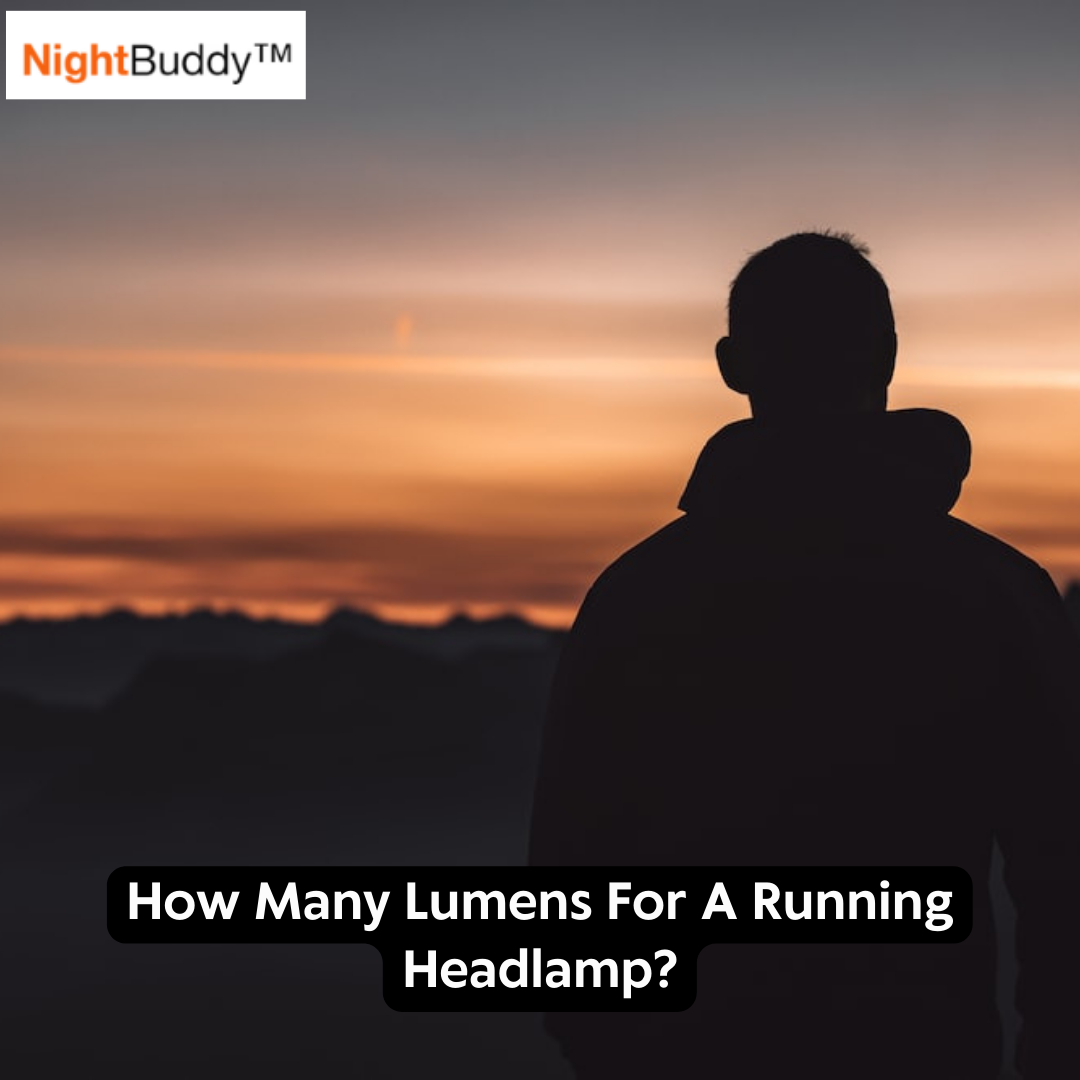Trail running is one of the best sports ever. Not everyone is inclined to like it, but some love the challenge of traversing different terrains while sweating it out. Another exciting aspect of this is that it can be done when it's dark- pre-dawn or after sunset hours.
There's many benefits for running at night. You can easily do your thing as it gives you the illusion that time is running fast. You can easily immerse into the experience- feeling the rush of your endorphins while stretching your physique. It's a fantastic way to decompress, lose weight, and boost your well-being.
However, there are factors to be wary of when running in the dark. With reduced visibility, you can easily stumble or bump into something. You wouldn't have a clear vision of your trail, and worse, motorists and pedestrians will not be able to see you. With everything almost lost in the darkness, you can't even make use of your peripheral vision.
Read also; How to Stay Safe and Visible When Running at Night
Potential dangers can beset anyone when they're running at any time. These increase when running or doing your sport under low light conditions.
That's why you have to take the necessary precautions.
Primarily, you need to have a good light source, especially when you're running on a technical trail. At times, bright light is good, but you need a device that has different light modes and brightness settings.
You might think this is extra weight, but you can opt for something lightweight- what with the wide range of light output gadgets for nighttime running available in the market.
When it comes to this, you have to be particular about wearing a headlamp for trail running. Trail runners find running headlamps to be essential gear for sporting visible light when they train. It improves and gives them efficient night vision, especially when they adjust it to have a brighter light.
As a newbie, and now that you are aware, you need to determine the features that you should look for in quality headlamps. Your queries about this product may include:
What is the best brand of a headlamp for nighttime running? How many lumens does my headlamp need to have so that I can run safely by seeing and being seen? Where is the best place to buy this product? What features should I look for, in general, so that I can obtain maximum utility and functionality from it?

All these taken into context, the next part of this article will elucidate the factors that you should look for when buying a trail running or hiking headlamp.
Factors To Look For When Buying A Running Headlamp
#1 Type of headlamp beam
There are 3 types of headlamp beams that you can choose from, and they are:
Flood beam or wide beam. This type of beam of light emits light only in your immediate area- not long distance. It is ideal for general camp tasks at dusk or dawn.
Spot/focused/narrow beam. This is one of the beam lighting modes that allow you to see a long distance ahead. You'll find this device to be very useful if you are navigating a trail when it's dark.
Spot/flood beam. This is the most versatile type of trail running headlamp beam because you can conveniently adjust it.
#2 Running headlamp lumens or light output.
The light generated by a headlamp is measured in brightness through lumens. If you use a headlamp with the brightest lights or at maximum brightness, its battery life will get easily drained. It is typical for headlamps with high brightness levels to consume ample energy from their battery life. This is contrary to devices with low lumens or levels of brightness.
LED headlamps are popular where the number of LED ascertains their lumens.
When you ask "How much lumen output do I need for my headlamp", you cannot expect a singular answer, mainly because it depends on its use and purpose. In terms of trail running, you can consider a lumen rating that's somewhere from 25 to over 1,400.
The NightBuddy LED Headlamp is a suitable choice for your trail running needs. It pumps a powerful 350 lumens that give you a beam distance of 100 meters. With this premier, state-of-the-art headlamp, you can enjoy a clearer field of vision even when it's dark. Its varying lighting options include the red light mode that reduces glare and repels bugs and insects away.

Adjustable straps infused into the NightBuddy LED Headlamp design gives it a zero-bounce benefit. Whatever nighttime sport you are into- from running, biking, camping, and fishing, among others, you'll find the NightBuddy lighting technology to be an excellent choice.
Take note that the higher the lumens of your headlamp, the faster it consumes the battery life of your device. When using it on your nighttime sport, be sure to bring with you spare batteries, a disposable battery, or a rechargeable battery pack depending on your type of headlamp.
#3 The headlamp beam distance
As a trail running or nighttime sports gear, a headlamp is designed to illuminate your immediate or target area. Premium quality products are tested according to how far (in meters) the reach of their lights is. How far can your headlamp project its white light?
The lumens determine the light settings and brightness of your lighting device, whereas the beam distance refers to how far its lighting options can go.
#4 The run time or battery life of your lighting gear
Can your headlamp function with plenty of light from the time it was fully charged? You can see the light quality and light intensity of your gear, but there is no specific standard as to how long each product's battery life is.
When you shop around, you'll find selections for modern headlamps, powerful headlamps, and the traditional headlamp sorts, and you'll only get confused about the numbers that they show.
#5 The weight of your headlamp device
Batteries included, you can run on dark trails wearing a 7-ounce headlamp. That's the standard weight of such gear. If you're looking around for something lighter, there are headlamps with lesser weight, and they go along well with your hydration vest.
It matters how high-powered your device you want to be, too. Whether it emits dynamic lighting at the brightest setting or even the medium setting. In this case, your lighting gear will need to have additional features such as heavy-duty straps and external battery packs that weigh extra. It will have to be heavier. Nonetheless, these additional features of heavy-duty headlamps are used for special purposes.
#6 Your lighting gear brightness modes or levels
As with the lumens of light, your headlamp brightness modes or levels matter. Often, they are high, medium, or low modes emitting different levels of lumens of light. For the most part, you'll find 2 lighting modes on hiking headlamps. Trail running headlamps, on the other hand, has extra light wherein it has three or more lighting modes. The bike light has a distinctive design and lumens of light in the same way.
One of the key features of running headlamps is the strobe mode, also known as the flash mode which blinks to signify an emergency.
If you want your illuminating gear to have powerful lights, pick a product that has the Zoom or Boost Brightness Mode. Only certain types of lighting headlamp models have this feature. An intense level of light is projected by this gear for a quick time because it consumes the battery life rapidly.

#7 The red light mode of your headlamp
Among the types of lighting for your headlamp to mind is the red light mode. Other than keeping you safe, a red light mode for a headlamp for runners improves your vision. Headlamp for runners with red light prevents the shrinking of your pupils, unlike white light. As a result, it makes you see better in the dark.
Other types of lighting for this gear, especially with very bright lighting settings can put a strain on your vision and tends to be blinding. As the lumen count increases, it further hurts your eyes. When the power source of your headlamp is on red light mode, you'll preserve your vision and see better even when the device is off.
On road runs when it is foggy or misty, you can better navigate your trail because the red light projects itself on a straight line.
#8 Water-resistance feature of your lighting gear
Splashes of water come in contact with your headlamp when there's rain, and this is common when trail running. Some brands can handle short-term submersion in shallow water.
Frequently Asked Questions
How many lumens does a good trail running headlamp have?
Two hundred lumens on its high settings at the least and on normal conditions. However, when running on trails on a starless night, a headlamp with 300 lumens and up will suffice.
What factors should I look for when choosing a running light?
You will need brighter light when your surroundings are darker, especially pre-dawn and after sunset. Brighter light is crucial if your running route is not ambiently lighted. Look for a running light with at least 100 lumens and 500 lumens at most to handle this condition.
Is trail running slower than regular road running?
Yes, by 10% to 20%. So if you run 5 km in 25 minutes on your average road runs, it will take 28 to 30 minutes to do that when you trail run.
Read next;





Leave a comment
This site is protected by hCaptcha and the hCaptcha Privacy Policy and Terms of Service apply.